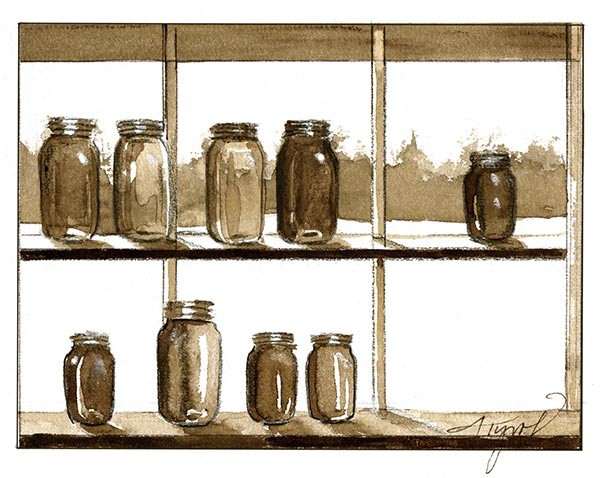
Some years sugaring season goes by the book, which is to stay things starts cold, and over the course of four to six weeks spring arrives gradually and consistently. In such a scenario, the syrup usually starts out light colored and sweet, then as the weather warms and the microbial load in the sap increases, the color gets progressively darker and the flavor more complex. (What’s happening is the microbes are converting the sucrose in the sap to invert sugars, which leads to more caramelization and a different flavor profile.) Around the time the buds break, the biochemistry of the sap changes and it starts picking up some sometimes nasty off-flavors.
Then there are years like this, which don’t follow the script. I make syrup in southern Vermont, where we saw highs spike up into the seventies and lows plummet into the single digits. While the syrup color sort of tracked with the crazy temperatures, our last boil of the year produced syrup that had a light amber color and a dark, late-season flavor that left a weird aftertaste in your mouth.
The whole maple industry is grappling with color and flavor these days, and to understand why you have to know the back story. Historically, maple sugar, not syrup, was the goal. Higher prices were paid for light maple sugar because it was both flavorfully and aesthetically similar to cane sugar.
This bias transferred to the syrup market and, until very recently, light syrup was worth more than dark. In Vermont there was also a semantic prejudice, with the light stuff being called “Grade A Fancy” and the dark stuff being called “B” and “C,” though the “C” couldn’t be sold in retail containers. Since peoples’ tastes vary, and since it usually takes more work to produce dark syrup than light syrup (more because the sugar content of the sap usually drops late in the year, so more boiling is required), the whole stratification was pretty dumb from a producer’s perspective. Brewers don’t charge less for stout than pilsner just because it’s dark. But it was something of a protection for consumers, in that really dark syrup can be offensively flavored.
Today the global industry is shifting towards a standardized grading system that features four different combined color and flavor profiles, all “Grade A.” There is no too-dark-for-retail-containers rule; it’s up to the producers to distinguish between good-tasting dark syrup and bad-tasting dark syrup. Off-flavored syrup of any color is sold to packing houses as “processing grade,” which is a catchall designation that also includes fermented syrup and ropy syrup, which is a slimy substance you can sometimes make very late in the year. The packers have secondary markets for this stuff.
I’m all for the new grade designations, but things can get a little tricky because technologies like vacuum pumps and improved spout design are allowing us to make syrup longer into the season, which sometimes means more off-flavored syrup, and on weird years like this, more light-colored off-flavor syrup. Color used to be a cheat-sheet, but not so much anymore. Reports in trade publications hold that as much as 40% of the crop has been off-flavored over the past 5 years.
We’ll sell the syrup we made on our last boil to a packer who has a market for off-flavored product. But you can see the potential for a conflict of interest here. If we put that same syrup in a retail container we could sell it and triple our money (though we might not get many repeat customers).
If you’ve ever bought funky tasting syrup that’s probably what happened, and it’s not always a case of a sugarmaker being unscrupulous. It’s human nature, when you put a lot of work into something, to delude yourself into thinking it’s alright. The lines between off, marginal, and good can be pretty fine, especially if you’re overtired and sick of tasting syrup after a whole season of it. Plus taste is subjective. Two people can have legitimately different ideas of what’s good and what’s not.
The way to navigate this as a consumer is to buy local and talk with your sugarmaker about the syrup you’re buying. Learn what you like and learn the conditions in which it was made. There’s a basic flavor profile for early season, mid-season, and late-season syrup, and your sugarmaker will be able to set you up with syrup that suits your palate.


Discussion *